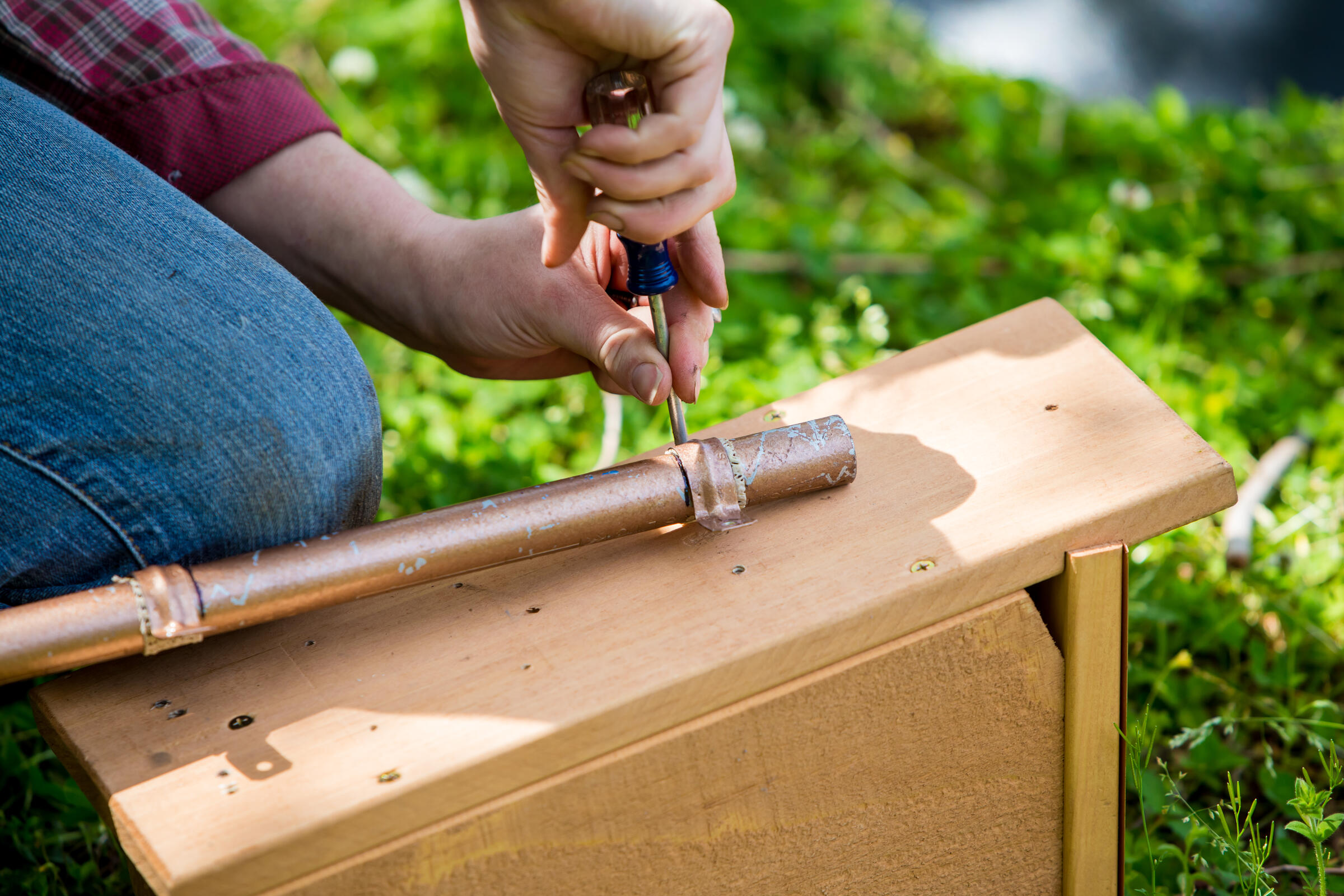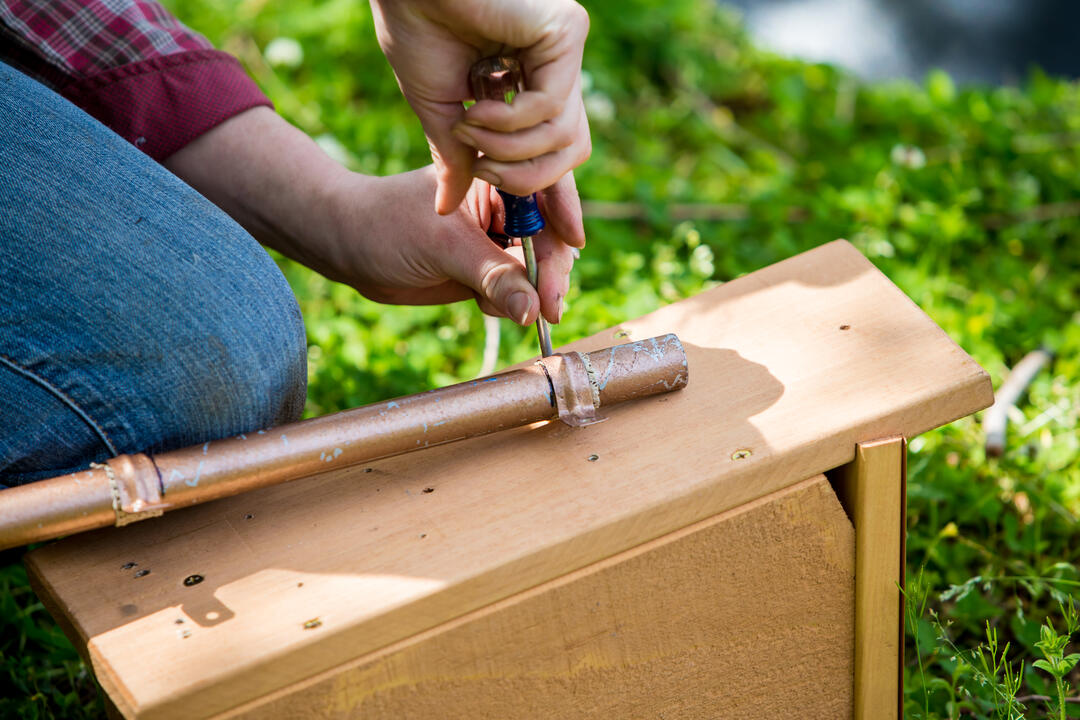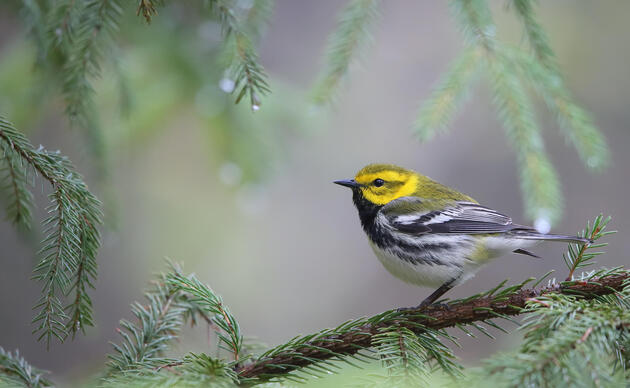Providing an adequate number of native flowering plants is essential, but it is only half of the battle. Wild bees, other pollinating insects, and birds also need a safe place to build a nest and spend the winter. There are plenty of natural and artificial features that they can utilize, many of which likely already exist nearby.
Snags
Standing dead trees -- or snags -- provide great habitat for a variety of insects. If safe, leave snags standing. Mason bees and leafcutter bees will use abandoned beetle holes to nest in. Carpenter bees will construct their own nests by burrowing into the dead wood. Woodpeckers excavate nesting cavities which are used as their nesting sites, as well as sites for a wide range of birds, including owls, chickadees, and swallows.
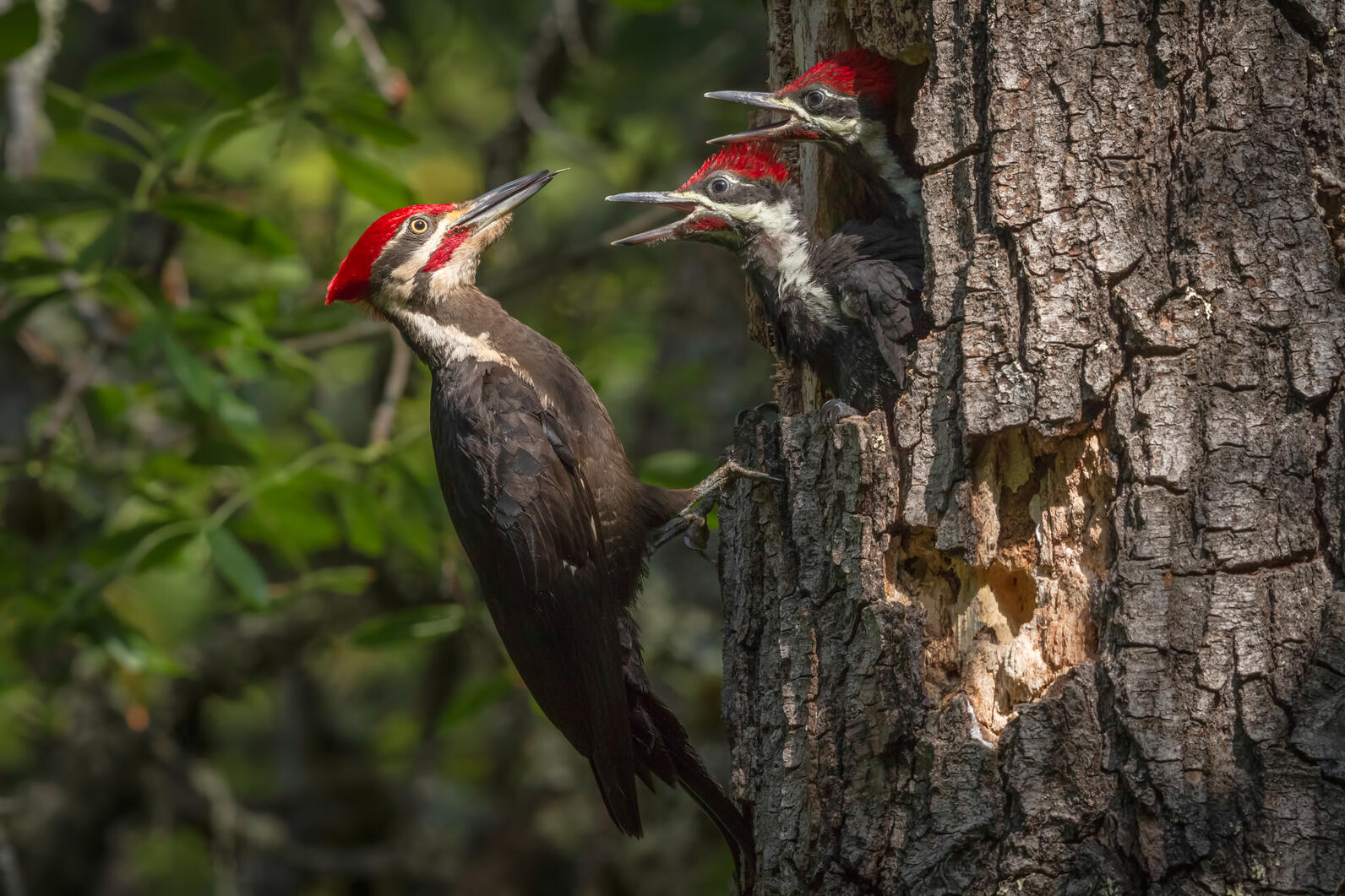
Woody Shrubs
Many native bees spend the winter inside the stems of plants and branches of shrubs such as raspberries, blackberries, and sumac. These shrub species are common along roadsides, open fields, and buffers. They also tend to spread very quickly -- if they are encroaching on fields, driveways or other parts of the property, don’t hesitate to prune them back. This is actually beneficial for the bees, which tend to prefer broken or cut stems since the softer interior is easier to burrow through. Birds can utilize these broken stems for nest building in the spring.
“The messier, the better”
Birds and bees prefer “messy” yards. Piles of scrap wood, logs, leaves, stone walls, rocks, and mounds of soil are all great places for solitary bees to nest and for bumblebee queens and other insect larvae to spend the winter. Birds use these sites to forage for food and utilize brush piles for shelter from predators and the cold.
Bee Houses
Nest blocks, or “bee houses,” are very easy to construct and are also widely available commercially. They can be as simple as holes drilled into a piece of scrap wood, or they can be specifically designed to house many different species at once. Be sure to place them near (within a few meters of) plenty of flowering plants, and if using multiple nest blocks, be sure to spread them out to avoid attracting predators. Nest blocks should be cleaned each year once the holes have been abandoned in order to reduce transmission of diseases or parasites. More information on cleaning and maintenance can be found through the Xerces society website: http://bit.ly/bee-nests
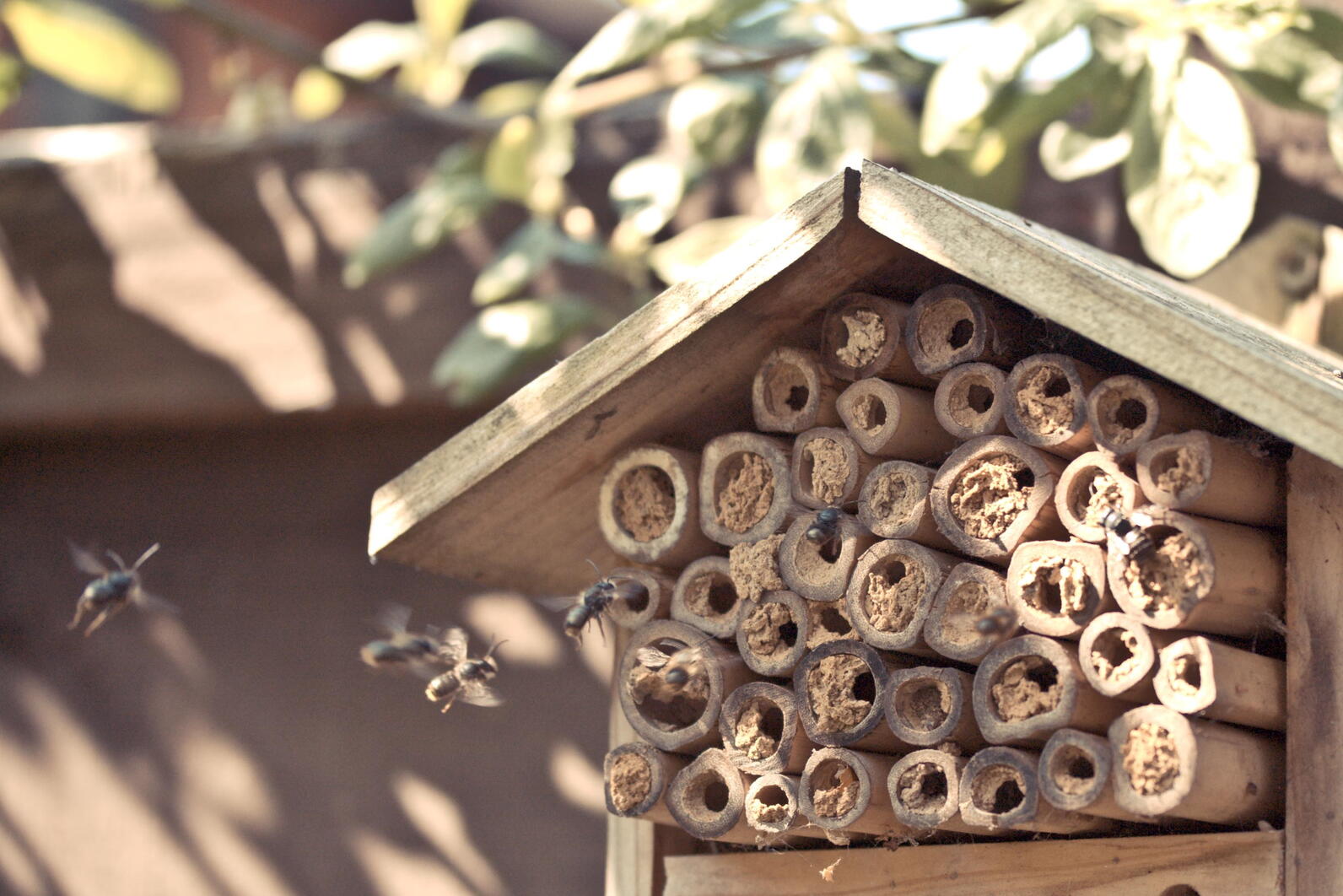
Bird Nest Boxes
Like bee houses, bird nest boxes are easy to construct and are widely available commercially. Consider providing nest boxes for birds like American Kestrel, Tree Swallow, and Eastern Bluebird. Swallow and bluebird boxes can be placed along fence lines and kestrel boxes should be put in a prominent tree near the forest edge or in a field. Boxes should be cleaned every spring. For more information on these types of nest boxes, visit:
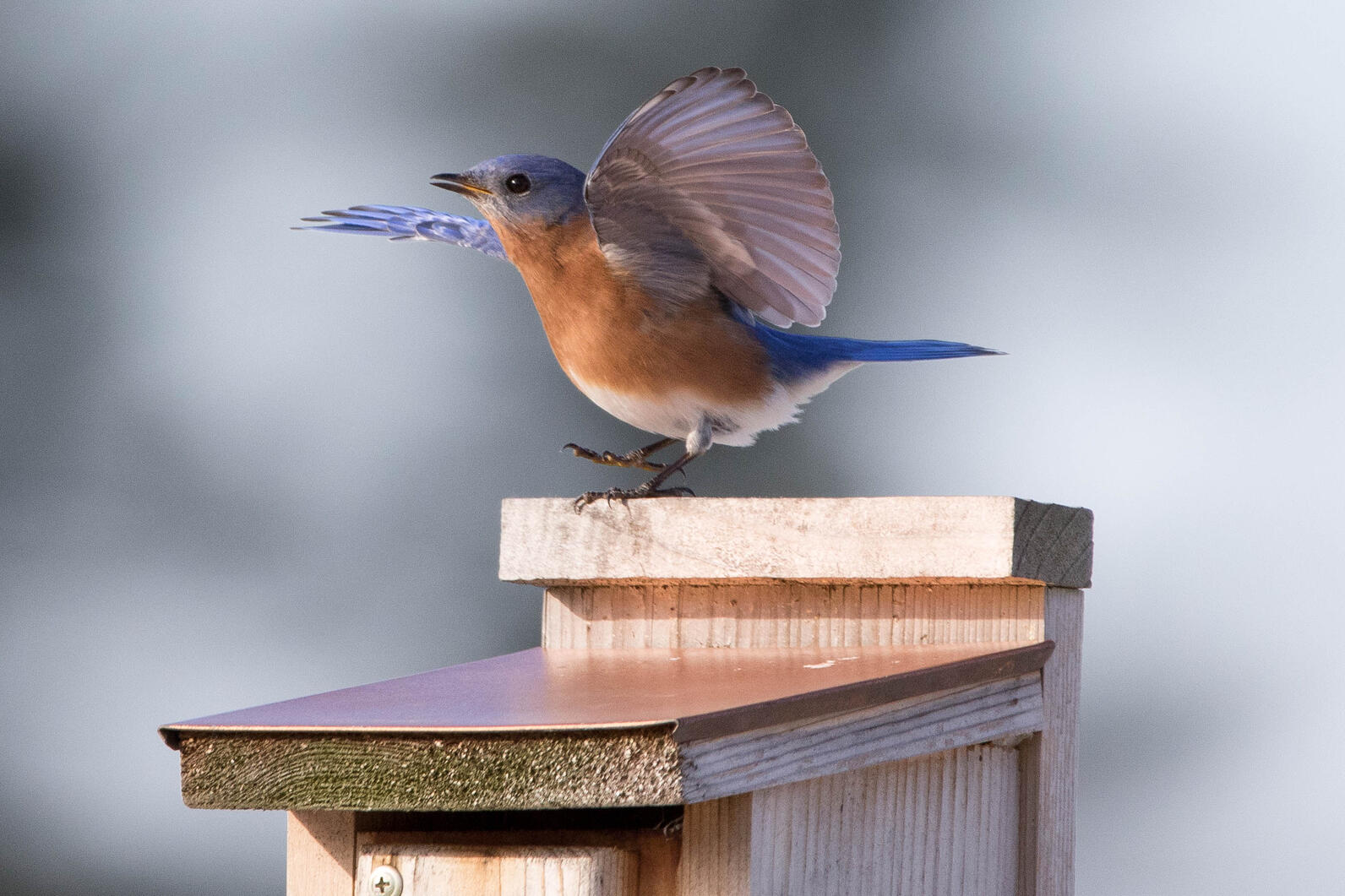
How you can help, right now
Donate to Audubon
Help secure a future for birds at risk from climate change, habitat loss and other threats. Your support will power our science, education, advocacy and on-the-ground conservation efforts.
Visit Audubon
It's always a good time to visit the Audubon Center. Trails are open to the public year-round. Visit us daily from dawn until dusk! Donations are appreciated.
Events
Adults, preschoolers, foresters, photographers, sugarmakers and families will all find opportunities to connect with nature.

